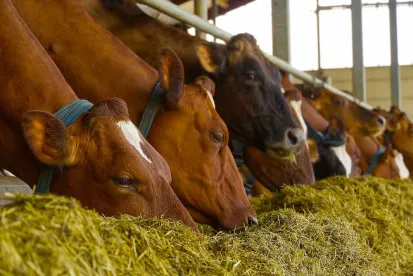This case addresses the issue of res judicata and the interpretation of the scope of an earlier judgment awarding an ongoing royalty.
Background
In 2006 and 2012, ABS and STGenetics entered into related contracts for sorting semen. In 2014, ABS filed an antitrust lawsuit in the Western District of Wisconsin against STGenetics. STGenetics brought counterclaims and third-party claims for, among other things, infringement of the ’987 patent. ABS stipulated to direct infringement of certain claims and the jury awarded STGenetics a “lump sum for ABS’s past infringement in the amount of $750,000, and a per straw royalty on future sales of sexed semen straws sold by ABS of $1.25.”
In 2020, STGenetics filed another lawsuit against ABS in the Western District of Wisconsin to assert, among other things, additional patent infringement claims based on the’987 patent (also asserted in the first suit), including induced infringement. ABS moved to dismiss the induced infringement claims on the grounds that they were precluded by the judgment in the first suit. The district court agreed with ABS and dismissed the action. Further, regarding the ongoing royalty, the district court stated that “the judgment [in the first suit] is reasonably interpreted to cover straws produced by third parties using GSS technology as licensed by ABS.” STGenetics appealed both the district court’s finding of claim preclusion and its interpretation of the ongoing royalty.
Issue
Does the district court’s finding of direct infringement in the first suit preclude induced infringement claims in the later suit?
Does the scope of the district court’s ongoing royalty award cover straws produced by third parties using GSS technology as licensed by ABS?
Holdings
The first suit did not preclude STGenetics from bringing induced infringement claims in a later suit because induced infringement was not the subject of the first suit and the operative facts surrounding the induced infringement differed from those of the first suit.
The district court abused its discretion in expanding the scope of the damages award in the first lawsuit as it relates to the ongoing royalty because the original royalty awarded did not include third-party manufacturing.
Reasoning
Res judicata. The court analyzed claim preclusion based on Seventh Circuit law, which compares the identity of the parties and the claims asserted. The same cause of action is asserted where the second claim is based on the same set of transactional facts as the first. The Court found there was no support in the record of the first suit that STGenetics asserted or cited induced infringement against ABS for actions taken by third parties as a result of ABS’s activities. Furthermore, the Court found that the induced infringement claim brought in the later suit was not precluded by the direct infringement finding in the first suit because the claims were not based on the same transactional facts. Namely, the first suit centered around ABS’s activity for direct infringement, while the later suit’s induced infringement claims centered around direct infringement based on the acts of third parties. The Court explained that STGenetics needed additional facts to plausibly allege induced infringement, facts that came to light during discovery in a lawsuit involving the parties that was filed between the two above lawsuits. Even though there was some evidence in the first suit that ABS induced third parties to infringe the ’987 patent, the Court still found no claim preclusion because the infringement allegations in the later suit were temporally limited to acts occurring after final judgment in the first suit.
The scope of the ongoing royalty. A district court’s interpretation of the scope of equitable authority and its orders is reviewed based on abuse of discretion. The Court found that the plain language of the royalty is limited to straws made by ABS. While “GSS technology” is mentioned throughout the first suit, the Court reasoned that the scope of ABS’s direct infringement allegations cannot reasonably be expanded to cover actions of third-party licensees using GSS technology to make their own straws in light of its reasoning that induced infringement was not precluded by the first suit. Accordingly, the district court improperly broadened the scope of the judgment to cover induced infringement activity.


 />i
/>i
